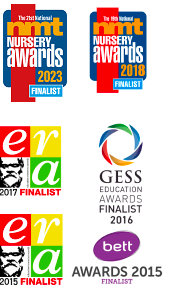The aims of ECaT:
- Raise practitioners’ skills and knowledge.
- Increase understanding and involvement of parents in their child’s language development.
- Promote children’s achievement in early language.
Every Child a Talker (ECaT), has been designed and developed to help childcare settings and practitioners create a developmentally appropriate, stimulating, and supportive environment in which children can enjoy experimenting with and learning language. It can be implemented whether children are in early years settings or at home with their parents.
Selecting the ECaT framework on eylog and using our comprehensive Observe, Assess, Track, Plan, Report structure enables individual learning journeys to be created for children . This provides opportunities for ECaT right from the start of a child’s development through everyday activities which reflect children’s interests, extending their vocabulary and helping them build sentences so that children are confident and skilled communicators before they start school.
From birth, babies are ready to communicate: they listen to and look at people and things in their environment, whilst also responding to what they hear and see. A stimulating environment in which carers and parents can respond sensitively and appropriately to the different meanings of cries, coos and gestures is essential for even the youngest of babies.
Being immersed in a rich environment of words, sounds, rhythm, and expressions from birth has an impact on a child’s language development. This early ability to communicate verbally and non-verbally is the basis on which language is developed.
Having ECaT in place helps you to provide and record the right support for every child’s needs from the start of their development and with eylog, practitioners have the ability to track progress and prevent any emerging delays, allowing learning to be tailored, so that children are given the help that they need.

